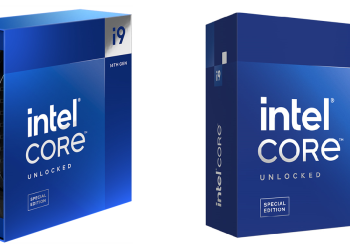Intel has confirmed it will add XeSS 3’s multi-frame generation to every game that already supports XeSS 2, a change that could multiply frame rates on supported Intel GPUs. The company says the new XeSS-MFG feature will be a drop-in replacement for existing XeSS 2 implementations, so developers should not have to change their games for it to work. That matters because multi-frame generation has mainly been the preserve of Nvidia’s latest cards through Nvidia DLSS until now. Bringing similar functionality to Intel’s stack opens the door to significant frame-rate gains on everything from Arc discrete GPUs to integrated Xe chips in laptops and desktops.
Intel fellow Tom Petersen confirmed the plan in a post noted in a TechPowerUp report. The feature inserts additional AI-generated frames between rendered frames, and Intel says users will be able to pick 2x, 3x, and 4x frame-gen modes inside the Intel Graphics Software override. In practice, this translates to up to four times smoother motion when the base frame rate is healthy. A good starting framerate matters, though; anything well below 60fps can produce artifacts and visual glitches.
Like DLSS 4, XeSS-MFG generates up to three extra frames between each hardware-rendered frame. Intel plans to roll the functionality out across its Xe family. Core Ultra 200 series chips with Xe2 cores and Intel Arc A and B-series GPUs will get the feature first, with older Xe1 parts receiving support later. Future Panther Lake CPUs with Xe3 GPU cores are also listed for support; see Intel’s Panther Lake coverage here.
Early performance data is circulating. Hassan Mujtaba shared a test on X where XeSS-MFG in ultra-quality upscaling pushed Painkiller from a native 62.9fps to 245fps and lifted Dying Light The Beast from 34.2fps to 133fps on an undisclosed Panther Lake sample with 12 Xe3 cores. That X post is the source of most of the numbers everyone is quoting today.
XeSS 3 MFG 4x (Ultra Quality Upscaling) performance numbers. Running on a 45W PTL 12Xe.
~250 FPS in Painkiller (EPIC / 1080p)
~130 FPS in Dying Light The Beast (Max / 1080p) pic.twitter.com/GXOHe34ABM— Hassan Mujtaba (@hms1193) October 9, 2025
Those figures are substantial enough to turn heads, particularly for machines that rely on integrated GPUs, where raw shader throughput is limited. Intel says the feature will appear automatically in titles that already implement XeSS 2, and the company intends to support the tech across its product stack. Adoption could be the real limiter. Fewer than 50 games currently support XeSS 2, so the benefit will be limited until more developers add the upscaler. Still, for budget systems and laptops, this could be a fast path to playable frame rates without expensive discrete silicon.
Intel’s move could give its GPUs an important feature parity play against Nvidia, and a distinct advantage over AMD models that lack multi-frame generation. How broadly the performance gains replicate outside early tests will determine whether this actually changes buying decisions for budget-conscious gamers.
Follow them on X, ping them on Bluesky, or watch their videos on YouTube.


























